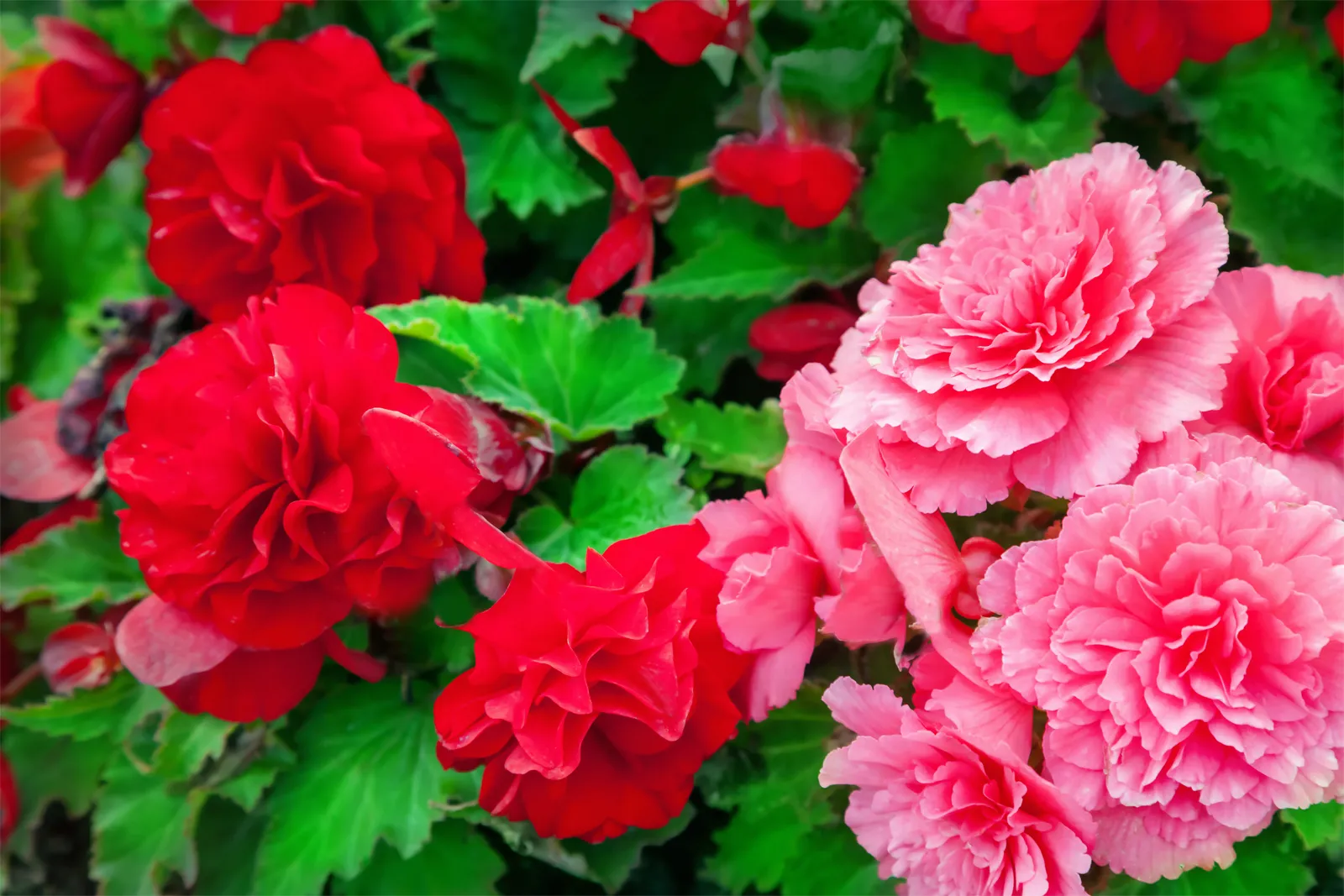Begonia flowers are getting popular, and there are some good reasons why they should be in every garden. Begonias offer a wide array of flower colors. While you might think of them as white, yellow, or pink, newer varieties now come in stunning shades of red, orange, and peach. Through careful breeding, begonias boast multi-colored blooms that rival even roses.

Begonias come in different flower forms. Single flowers, found in nature, usually have just a few petals, simple yet beautiful. Double-flowered begonias, cultivated varieties, have many petals, resembling camellias or roses. They’re showier and come in various forms, with males being the more extravagant.
Unlike many plants that require deadheading (removing old flowers) to encourage new blooms, begonias don’t. They naturally shed unpollinated flowers and replace them with new ones. Wax begonias and dragon wings are great examples of varieties that bloom continuously without deadheading.
While most begonias are unscented, some, like Begonia odorata and certain hybrids, emit a light fragrance. For instance, ‘Angelique,’ a double-flowered B. odorata hybrid, has a pleasant scent. These begonias can also tolerate full sun.
Begonias attract a diverse range of pollinators, including hummingbirds. Many begonia species and their varieties provide nectar that hummingbirds adore. With their bright orange and red flowers, some begonias, like Begonia boliviensis, are perfect for hummingbirds, especially those native to the Andes in South America.
Beyond their beautiful flowers, begonias often have attractive foliage, making them visually appealing even when not in bloom. So, consider adding begonias to your garden for a burst of color, fragrance, and wildlife attraction. These versatile plants can be a delightful addition to any garden.
Leave a Reply